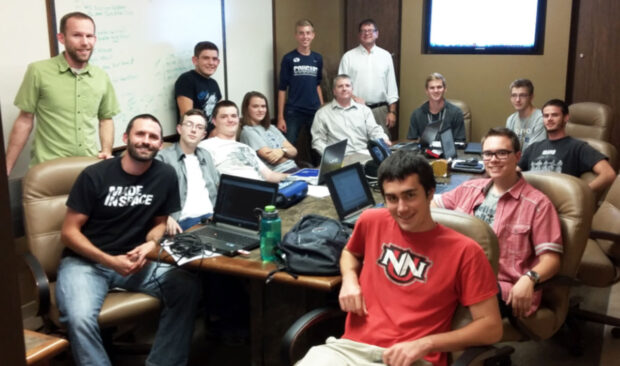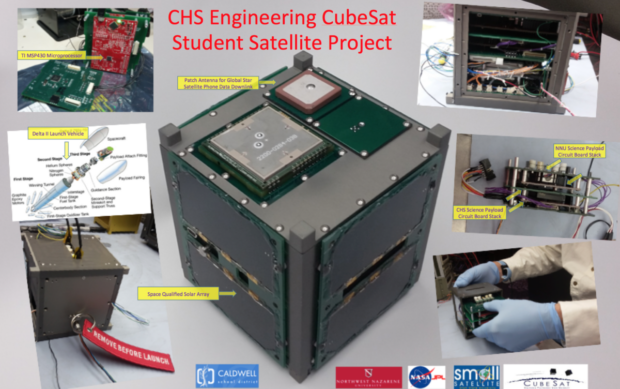CALDWELL — Three, two, one … lift-off!
The countdown is on for Caldwell students to become the first Idaho high school to have an operational mini-satellite in space. Caldwell High could also become one of the first in the nation if the launch happens as planned in March. The first high school was from Alington, VA, and launched in 2014.
“It’s mind blowing that we built something that is going to space,” said Chris Lile, a junior at Caldwell High.
Seven Caldwell High engineering students, with the help of two professors and four students from Northwest Nazarene University, will launch a four-inch, cube-shaped satellite called a ‘CubeSat’ into Earth’s orbit.
“The professors at NNU thought we had the expertise in our electronics program to be relevant and to produce a science project to ride along,” said Dennis Zattiero, an engineering teacher at Caldwell High.
The launch is part of the ELaNa 14 (Educational Launch of Nanosatellites) program. The NNU engineering department was awarded the NASA Idaho Space Grant Consortium (ISGC) undergraduate research grant in 2015. The NNU team is including Caldwell High students in the research and development of the CubeSat.
“The sky is the limit,” said Dennis Zattiero, an engineering teacher at Caldwell High. “This is an experience most high school students don’t get.”
The NNU project is to chart a pilot course towards 3D printing in space. The project will test 3D printing materials for degradation while in orbit.
Caldwell students’ objective is to study space weather from the CubeSat. Students had two months to install a sensor, custom design a circuit board, and program and install a second circuit board containing a microcontroller on the satellite, which will monitor the difference in radiation from sources like sunspots and from deep space.

Every week for two months, engineering students from Caldwell High and NNU gathered to discuss the program schedule, design, build, and test each of their portions of the CubeSat project.
“I never thought we would get this far,” Zattiero said. “I was skeptical of all the hurdles and now it’s all sinking in.”
NNU and Caldwell High’s CubeSat will be launched into space while on board a Delta 2 rocket in a space capsule. The launch is scheduled for March 16 at Vandenberg Air Force Base in California. CubeSats built by Embry Riddle Aeronautical University, Massachusetts Institute of Technology and Vanderbilt University will be launched at the same time.
Once the two-pound satellite is launched, it will orbit at 17,000 miles an hour for the next 10 years. It takes 100 minutes for the CubeSat to complete one path around Earth’s orbit. Students will be able to track data every orbit.
“I will absolutely use the data for future curriculum,” Zattiero said. “I would like to get students in other satellite projects and use this current project as a reference.”
NNU students have been working on the project for two years. The high school students started their component two months ago and have logged 1,000 hours into the satellite.
More than $100,000 has gone into the project. The CubeSat is now headed to Cal Poly State University, San Luis Obispo for final testing. On launch day, students plan to celebrate with sparking cider and pizza — once the CubeSat makes it to space.
North Idaho STEM Charter Academy is working on a CubeSat, which is expected to launch summer 2017. There have been 479 CubeSATs launched in the world.

